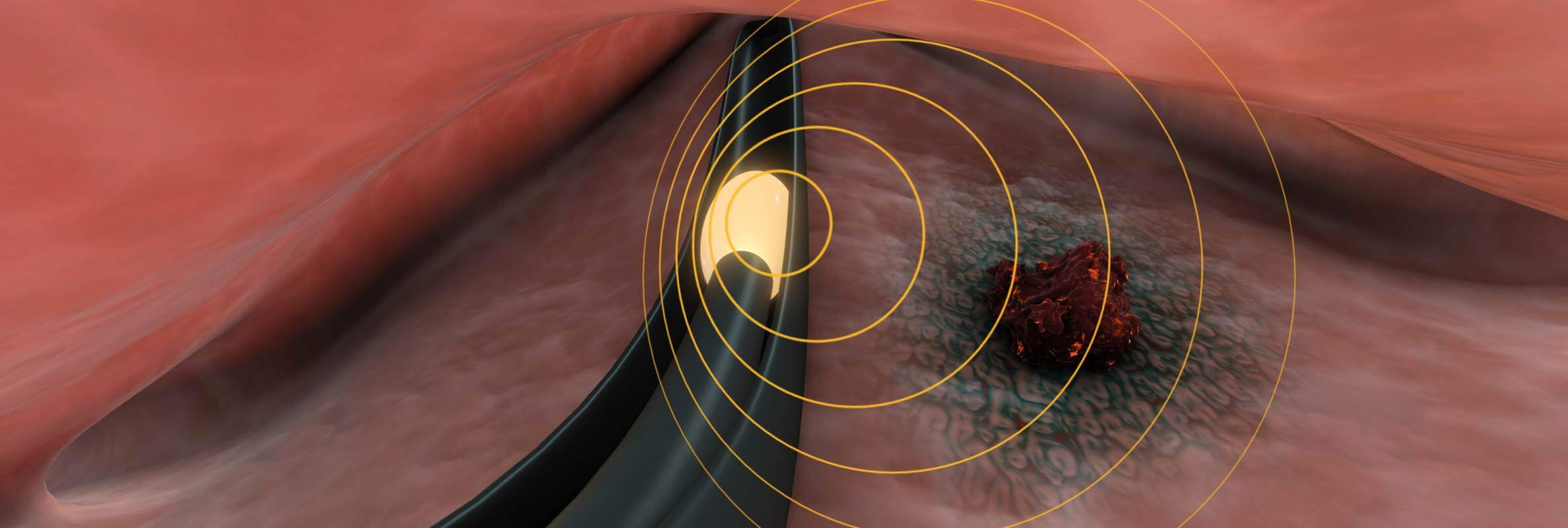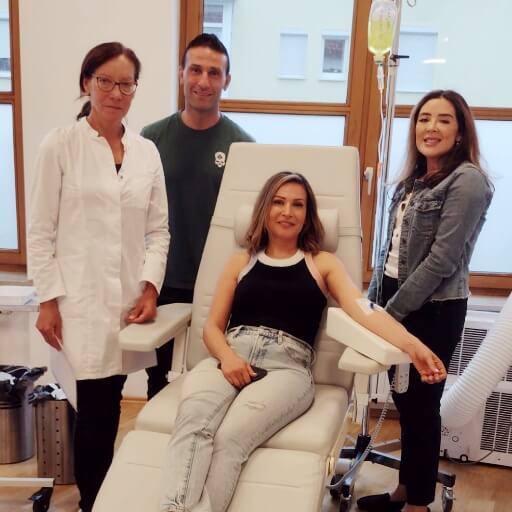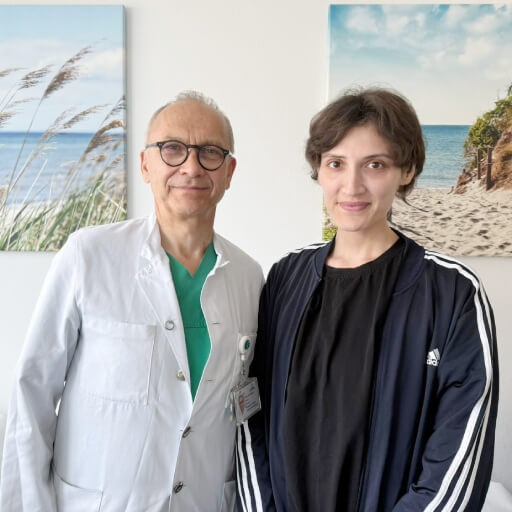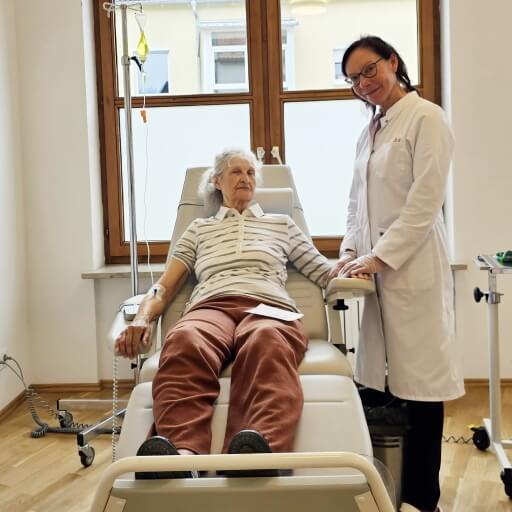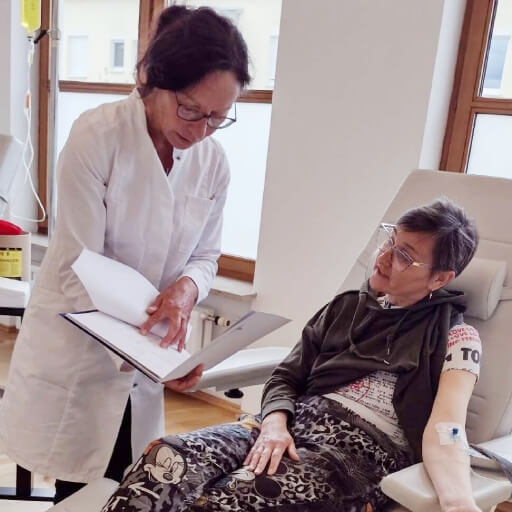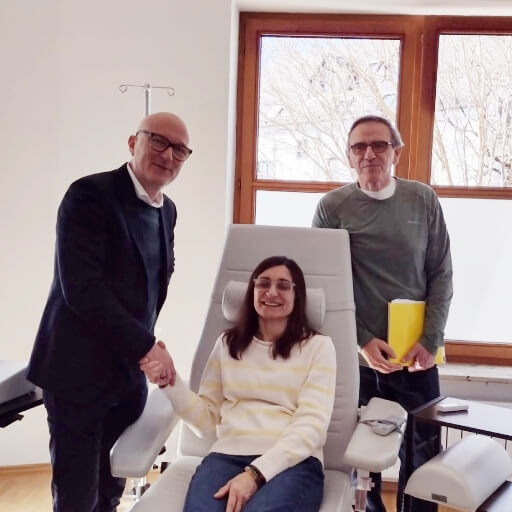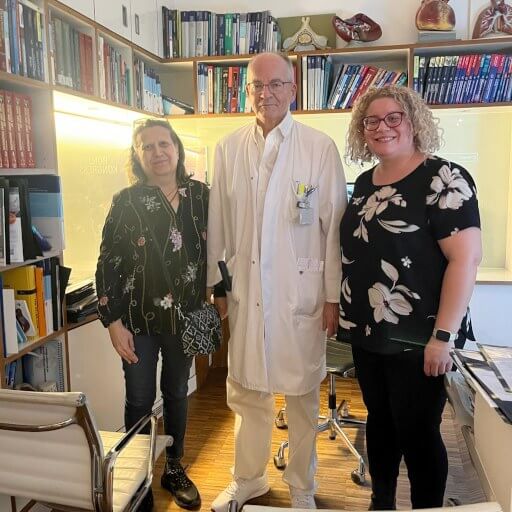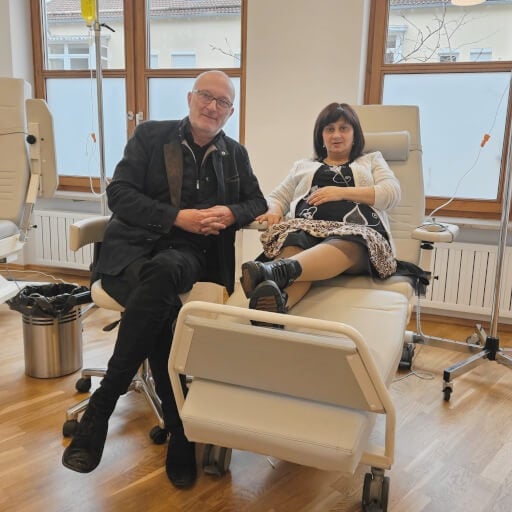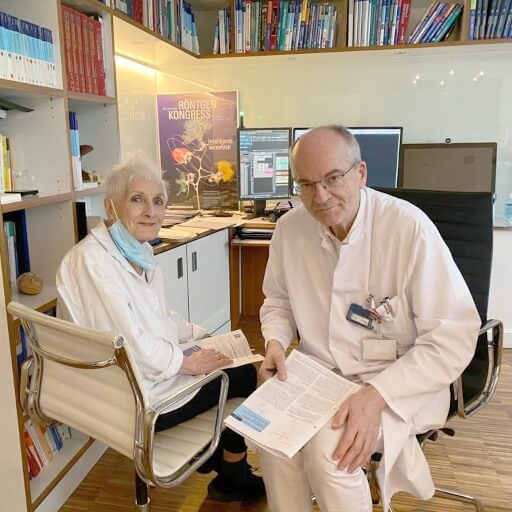Uterine cancer, and particularly endometrial cancer - the most common form - has become an increasingly urgent concern worldwide. According to a recent PubMed-indexed global burden analysis, there were approximately 360,253 new cases and 84,630 deaths from endometrial cancer among postmenopausal women in 2021 [1]. These figures underscore the critical need for precise and effective therapies. In this context, brachytherapy for uterine cancer emerges as a pinpoint and highly efficient treatment modality, offering substantial advantages over broader approaches.
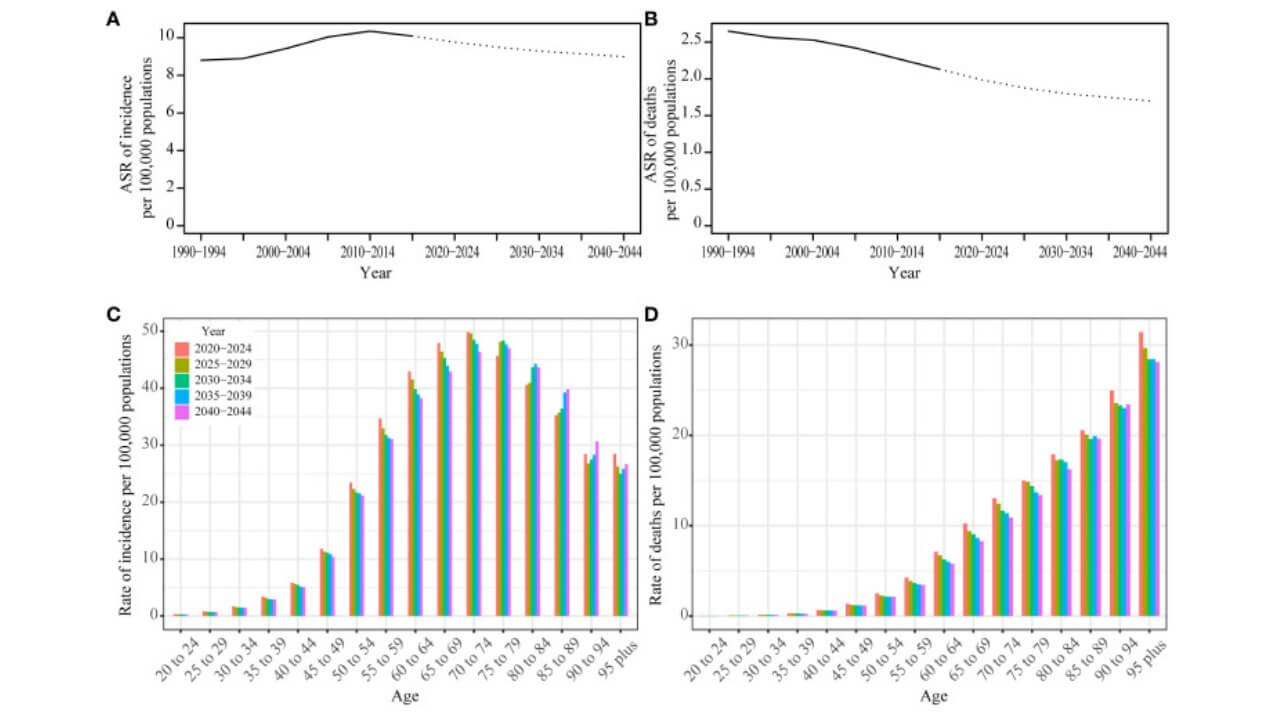
Germany is internationally recognized for its cutting-edge technology and top-tier cancer care, particularly in radiation oncology. German cancer centers leverage advanced high-dose rate brachytherapy (HDR brachytherapy) and novel radiation sources to deliver targeted internal radiation therapy, minimizing exposure to healthy tissue while maximizing impact on cancer cells. As a result, for patients seeking both precision and efficacy, Germany’s radiation oncologists and institutions stand at the forefront of innovation in the fight against uterine cancer.
What Is Brachytherapy for Uterine Cancer?
When doctors talk about brachytherapy for uterine cancer, they mean a highly targeted form of internal radiation therapy. Unlike external beam radiation therapy, which directs rays from outside the body, brachytherapy places a small radiation source directly inside or very close to the tumor area. This allows specialists to deliver higher doses of radiation to malignant tissue while protecting surrounding healthy tissue. For women with endometrial cancer, brachytherapy can serve as a primary treatment, or it may be used in combination with surgery and external techniques as part of a broader treatment plan.
How Brachytherapy Works
Before brachytherapy treatment begins, a radiation oncologist carefully prepares a treatment plan. Using MRI, CT, or ultrasound scans, the team maps the tumor and surrounding organs. This allows doctors to calculate the exact placement of the radioactive material and determine how long it should stay inside the body to deliver the necessary dose.
Step 1: Inserting the Applicator
On the day of the procedure, the patient is positioned comfortably, usually under local or light anesthesia. A special medical device, called an applicator, is gently placed into the uterus or vaginal canal. The shape and type of applicator depend on the tumor’s location and size.
Step 2: Positioning the Radioactive Source
Once the applicator is secured, a thin tube connects it to a machine that contains the radioactive material. The material travels through the tube and sits inside the applicator. Because it is placed so close to the tumor, doctors can use higher doses of radiation while protecting surrounding healthy tissue.
Step 3: Delivering the Radiation
The machine controls exactly when the radiation source enters the applicator and how long it stays there. The entire process is computer-guided, ensuring maximum precision. Depending on whether doctors use low-dose rate or high-dose rate brachytherapy, the treatment may last minutes or several hours.
Step 4: Removing the Applicator
After the prescribed dose has been delivered, the radioactive source automatically withdraws back into the machine. The applicator is then carefully removed. No radiation remains inside the patient’s body, so it is safe to go home or to another hospital room shortly afterward.
Step 5: Repeated Sessions if Needed
Brachytherapy treatment is often given in multiple sessions. Each session follows the same process: imaging, applicator placement, and controlled delivery of radiation. The number of sessions depends on the treatment plan and the stage of uterine cancer.
Types of Brachytherapy for Uterine Cancer
There are several forms of brachytherapy applied in gynecologic cancers, and each has its unique role:
- Vaginal brachytherapy – often used for early-stage endometrial cancer after surgery, placing the radiation applicator inside the vaginal canal
- Interstitial brachytherapy – applied in more advanced or recurrent cases, where needles or catheters are placed into the tumor tissue itself
- Both brachytherapy and external beam radiation therapy may be combined, particularly in aggressive cases, to achieve the best balance between local control and broader disease management
Benefits of Brachytherapy for Uterine Cancer
One of the most significant advantages of brachytherapy for uterine cancer is its ability to focus radiation directly where it is needed. Because the radiation source is placed inside the uterine cavity or vaginal canal, doctors can deliver higher doses to the tumor with minimal exposure to surrounding healthy tissue. This precise approach is especially important for women with endometrial cancer, where local control of the disease is critical.
Fewer Side Effects Compared to External Radiation
Unlike external beam radiation therapy, which passes through skin, bladder, and rectum before reaching the uterus, brachytherapy treatment reduces unnecessary radiation to these organs. As a result, side effects such as urinary problems, bowel dysfunction, and vaginal toxicity occur less frequently. According to clinical data, late vaginal toxicity after HDR endovaginal brachytherapy is generally mild, with most cases limited to grade 1 changes. More severe complications are rare.
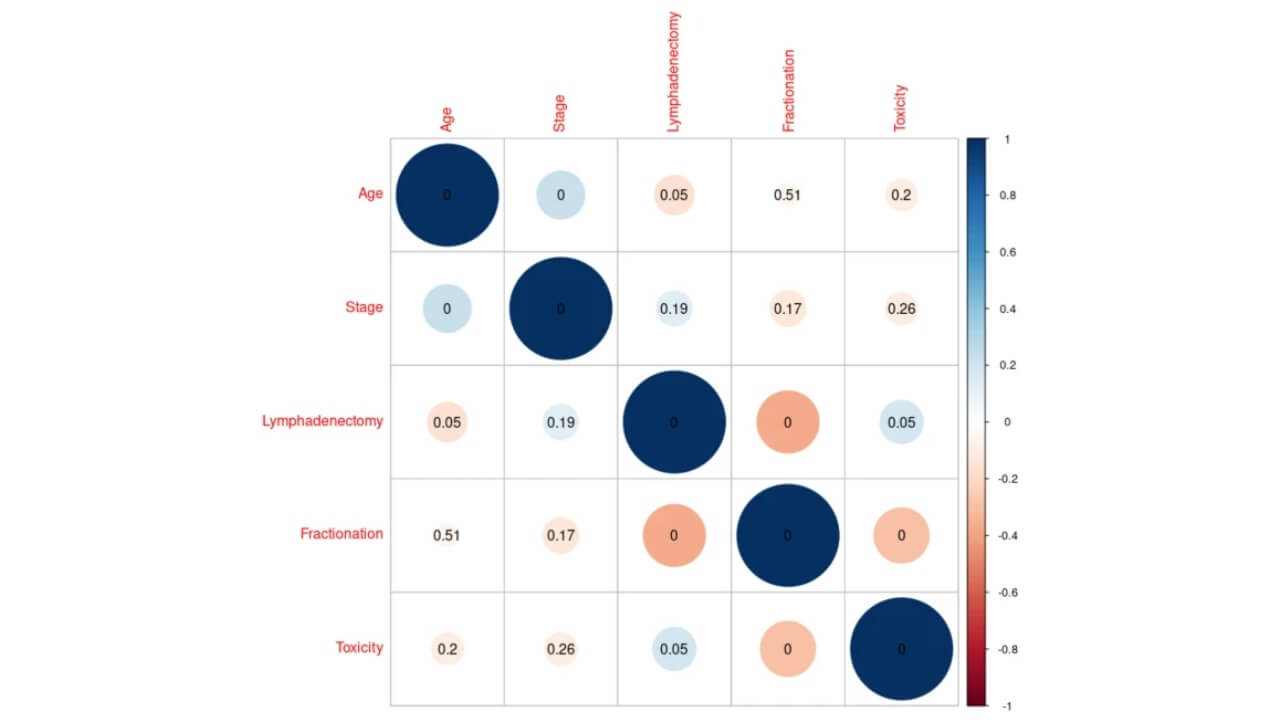
In Germany, where radiation oncologists use state-of-the-art imaging and cutting-edge technology for treatment planning, the incidence of such side effects is even lower compared to international averages. This means patients can expect not only effective tumor control but also a safer course of therapy with improved quality of life.
Shorter and More Convenient Treatment Courses
Modern HDR brachytherapy allows radiation to be delivered in just a few brief sessions. For many women, this means treatment can be completed in one or two weeks instead of several, as is typical with external beam radiation therapy methods. Often, these sessions are performed on an outpatient basis, allowing patients to return home the same day and recover in familiar surroundings. This outpatient format is particularly valuable in comprehensive German cancer care, where efficiency and patient comfort are priorities.
High Effectiveness in Local Tumors
For women with early-stage uterine cancer, brachytherapy has proven to be a highly effective treatment. It is frequently used as a main treatment after surgery or as a primary treatment when surgery is not an option. The ability to deliver concentrated radiation directly to residual cancer cells significantly reduces the risk of local recurrence. International studies confirm excellent control rates in gynecologic cancers, making brachytherapy one of the cornerstones of modern radiation oncology.
Brachytherapy in Germany
Germany has earned a global reputation as a leader in oncology, particularly when it comes to brachytherapy for uterine cancer. Patients from all over the world choose German clinics because of their uncompromising standards of quality, international accreditations, advanced technology, and the experience of highly specialized radiation oncologists. These factors ensure that women with endometrial cancer receive safe, precise, and effective care tailored to their unique needs.
Internationally Accredited Cancer Centers
German hospitals and specialized cancer institutes are regularly accredited by organizations such as the Joint Commission International (JCI) and the German Cancer Society (DKG). These accreditations guarantee that facilities follow strict international standards in radiation oncology, patient safety, and overall cancer care. For patients seeking the best outcomes, such certification is a reliable indicator that every aspect of their treatment plan—from diagnosis to follow-up—is carried out under rigorous quality control.
Cutting-Edge HDR Techniques
One of the cornerstones of brachytherapy treatment in Germany is the use of HDR brachytherapy [4]. This method delivers higher doses of radiation over a short period. Unlike older low-dose rate methods that required hospital stays of several days, modern HDR allows most women to undergo treatment on an outpatient basis. German clinics invest heavily in cutting-edge technology, including real-time imaging and 3D planning systems, which make it possible to place applicators with millimeter precision and spare surrounding healthy tissue.
In complex or recurrent cases, German specialists may combine both brachytherapy and external beam radiation therapy [5]. This dual approach ensures maximum local tumor control while simultaneously addressing potential microscopic disease outside the uterus. Such flexibility makes brachytherapy not only a main treatment but also a vital component of combination therapies in gynecologic cancers.
Experienced Radiation Oncologists
Behind every successful procedure stands a skilled radiation oncologist. In Germany, these experts undergo years of specialized training in radiation oncology and accumulate extensive hands-on experience with gynecologic cancers, including endometrial cancer and vaginal cancers. Their expertise lies not only in placing applicators but also in developing a highly individualized treatment plan for each patient. This includes choosing between primary treatment with brachytherapy, adjuvant therapy after surgery, or integrating brachytherapy into a combined protocol.
The physician’s role goes beyond technology: German specialists take time to explain options, expected side effects, and recovery strategies. This human-centered approach, combined with technical excellence, builds trust and helps patients feel more secure during what can otherwise be an overwhelming process.
State-of-the-Art Equipment and Facilities
Modern German hospitals are equipped with advanced imaging tools such as MRI and CT-based planning, ensuring precise positioning of the applicators inside the uterine cavity or vaginal canal. Sophisticated software calculates how radiation spreads from the radioactive material, allowing oncologists to adjust every parameter of the dose. Thanks to this approach, doctors can safely deliver higher doses to cancer cells while protecting organs like the bladder and rectum.
Some centers also offer specialized techniques such as interstitial brachytherapy, used for more advanced or irregularly shaped tumors. The availability of such advanced methods demonstrates Germany’s commitment to maintaining leadership in radiation oncology and offering patients every possible advantage.
Lower Toxicity Rates Compared to International Averages
Side effects are a major concern for any patient undergoing radiation. However, German clinics consistently report lower rates of toxicity compared to global data. Studies highlight that complications such as vaginal stenosis, fibrosis, or urinary issues are kept at minimal levels when brachytherapy is performed in accredited German centers. This is due not only to advanced planning systems but also to meticulous follow-up care and rehabilitation programs.
Importantly, German radiation oncologists integrate supportive care, pelvic floor training, and modern rehabilitation into the overall treatment plan. As a result, women recover faster and enjoy better long-term quality of life compared to those treated in facilities with less advanced infrastructure.
Comprehensive Cancer Care in Germany
Another factor that makes Germany stand out is the integration of brachytherapy into a broader model of cancer care. Treatment does not stop at radiation delivery: it is part of a continuum that may include surgery, chemotherapy, immunotherapy, and long-term monitoring. This holistic approach allows for seamless coordination between different specialists, ensuring that patients benefit from a well-rounded program rather than fragmented care.
Moreover, German healthcare policy supports continuous innovation. Hospitals regularly upgrade equipment and adopt new cutting-edge technology, from advanced applicators to AI-assisted treatment planning. This constant modernization ensures that patients always receive care that reflects the latest medical knowledge and techniques.
Why Patients Choose Germany
For international patients, choosing Germany for brachytherapy for endometrial cancer or other gynecologic cancers means access to:
- Internationally accredited hospitals and cancer institutes
- Highly experienced radiation oncologists with specialized expertise
- Modern HDR systems are capable of delivering safe and effective higher doses
- State-of-the-art imaging and planning technologies
- Lower rates of side effects compared to international averages
- Efficient, patient-centered treatment plans are often completed on an outpatient basis
In short, Germany combines precision, innovation, and compassion, making it one of the world’s best destinations for patients seeking effective treatment for uterine cancer.
| Country | Cost of treatment |
|---|---|
| Price of Treatment in Germany | €28,000 - €42,000 |
| Price of Treatment in the UK | €35,000 - €65,000 |
| Price of Treatment in the USA | €40,000 - €80,000 |
A Medical Journey: Every Step of the Way With Booking Health
Finding the best treatment strategy for your clinical situation is a challenging task. Being already exhausted from multiple treatment sessions, having consulted numerous specialists, and having tried various therapeutic interventions, you may be lost in all the information given by the doctors. In such a situation, it is easy to choose a first-hand option or to follow standardized therapeutic protocols with a long list of adverse effects instead of selecting highly specialized innovative treatment options.
To make an informed choice and get a personalized cancer management plan, which will be tailored to your specific clinical situation, consult medical experts at Booking Health. Being at the forefront of offering the latest medical innovations for already 12 years, Booking Health possesses solid expertise in creating complex management programs in each individual case. As a reputable company, Booking Health offers personalized treatment plans with direct clinic booking and full support at every stage, from organizational processes to assistance during treatment. We provide:
- Assessment and analysis of medical reports
- Development of the medical care program
- Selection of a suitable treatment location
- Preparation of medical documents and forwarding to a suitable clinic
- Preparatory consultations with clinicians for the development of medical care programs
- Expert advice during the hospital stay
- Follow-up care after the patient returns to their native country after completing the medical care program
- Taking care of formalities as part of the preparation for the medical care program
- Coordination and organization of the patient's stay in a foreign country
- Assistance with visas and tickets
- A personal coordinator and interpreter with 24/7 support
- Transparent budgeting with no hidden costs
Health is an invaluable aspect of our lives. Delegating management of something so fragile yet precious should be done only to experts with proven experience and a reputation. Booking Health is a trustworthy partner who assists you in pursuing stronger health and a better quality of life. Contact our medical consultant to learn more about the possibilities of personalized treatment with innovative methods for different types of cancer with leading specialists in this field.
Modern Cancer Treatment: Patient Journeys with Booking Health
Frequently asked Questions of Our Patients About Brachytherapy for Uterine Cancer
Send request for treatmentBrachytherapy for uterine cancer is a form of precision radiotherapy where a small radiation source is placed directly inside the uterus. This internal radiation allows doctors to treat cancer tissue with high accuracy, delivering strong doses to tumors while sparing nearby organs, leading to more effective treatment with reduced side effects.
Choosing brachytherapy in Germany means access to world-class hospitals, advanced imaging, and experienced radiation oncologists. Clinics apply the latest HDR techniques, ensuring highly accurate dosing and fewer complications. Patients also benefit from shorter, outpatient treatments and comprehensive rehabilitation, making Germany a leader in precision radiotherapy.
Unlike external beam radiation, which passes through surrounding tissues, brachytherapy for uterine cancer delivers internal radiation directly into the tumor. This approach provides higher precision, shorter courses of therapy, and significantly reduced side effects. For many women, it is more comfortable, safer, and highly effective for controlling localized cancer.
The cost of brachytherapy in Germany depends on the clinic, stage of cancer, and whether it is combined with other treatments. On average, prices start from €28,000–€42,000 for a complete course. Despite differences, German hospitals provide advanced techniques that help treat cancer more precisely, making it a worthwhile option for international patients.
Yes. Booking Health support helps international patients arrange diagnostics, therapy, and follow-up care in leading German clinics. The service assists with medical records, translation, cost transparency, and visa arrangements. This ensures patients receive precision radiotherapy in Germany smoothly, with less stress and guaranteed access to top brachytherapy Germany specialists.
Choose treatment abroad and you will for sure get the best results!
Authors:
This article was edited by medical experts, board-certified doctors Dr. Nadezhda Ivanisova, and Dr. Bohdan Mykhalniuk. For the treatment of the conditions referred to in the article, you must consult a doctor; the information in the article is not intended for self-medication!
Our editorial policy, which details our commitment to accuracy and transparency, is available here. Click this link to review our policies.
Sources:
[1] Songkun Gao, Jinhua Wang, Zhongxian Li, Tong Wang, Jiandong Wang. Global Trends in Incidence and Mortality Rates of Endometrial Cancer Among Individuals Aged 55 years and Above From 1990 to 2021: An Analysis of the Global Burden of Disease. Int J Womens Health. 2025 Mar 6:17:651-662. doi: 10.2147/IJWH.S499435. eCollection 2025.[DOI] [PubMed]
[2] Shuang Song, Dandan Zhang, Yizi Wang, Zixuan Song. Changing trends in the disease burden of uterine cancer globally from 1990 to 2019 and its predicted level in 25 years. Front Oncol. 2024 Apr 22;14:1361419. doi: 10.3389/fonc.2024.136141. [DOI] [PMC free article]
[3] Valentina Lancellotta, Gabriella Macchia, Nicola Dinapoli et al. EROS 2.0 study: evaluation of two interventional radiotherapy (brachytherapy) schedules for endometrial cancer: a comparison of late vaginal toxicity rates. Radiol Med. 2022 Jan 29;127(3):341–348. doi: 10.1007/s11547-022-01455-y. [DOI] [PMC free article]
[4] Clinical and Translational Radiation Oncology. The current status of brachytherapy in Europe − A GEC-ESTRO Brachy-HERO survey. https://www.ctro.science/article/S2405-6308(24)00160-5/fulltext
[5] International Journal of Gynecological Cancer. External beam radiotherapy versus vaginal brachytherapy in patients with stage II endometrial cancer: a systematic review and meta-analysis. https://www.international-journal-of-gynecological-cancer.com/article/S1048-891X(24)00150-6/fulltext
Read:
Uterine cancer: Treatment Options for Endometrial (Womb) Cancer
4 Stage Uterine Cancer: Treatment Options for Stage 4 Endometrial Cancer
Leading 10 Gynecologic Oncologists in Germany: Who Are They?
Article menu:
Don't know where to start?
Contact Booking Health